Start of Document
Contributors
Versions
Table of Contents
1 General
1.1 Objectives
1.2 Introduction
1.3 Overview of the defined Function Blocks
1.3.1 Length of FB names and ways to shorten them
1.4 Glossary
2 Principles of Coordinated Motion
2.1 Coordinate System and kinematic transformation
2.1.1 Kinematic Transformation
2.2 How do commands behave in dynamic coordinate systems
2.3 Movements
2.4 Blending and Buffering of Movements
2.4.1 General Information
2.4.2 Overview of Buffer Modes
2.4.3 Overview of Transition Modes
2.4.4 Matrix of available transition modes
3 Model
3.1 State diagram
3.2 Relationship Single Axis and Grouped Axes State Diagrams
3.3 Input Execution Mode
4 Axes Grouping
4.1 Creating and using an AxesGroup
5 Function Blocks for Coordinated Motion
5.1 MC_AddAxisToGroup
5.2 MC_RemoveAxisFromGroup
5.3 MC_UngroupAllAxes
5.4 MC_GroupReadConfiguration
5.5 MC_GroupEnable
5.6 MC_GroupDisable
5.7 MC_GroupHome
5.8 Transformation FBs
5.8.1 MC_SetKinTransform (ACS to MCS)
5.8.2 MC_SetCartesianTransform (MCS to PCS)
5.8.3 MC_SetCoordinateTransform (MCS to PCS)
5.8.4 MC_ReadKinTransform (ACS to MCS)
5.8.5 MC_ReadCartesianTransform (MCS to PCS)
5.8.6 MC_ReadCoordinateTransform (MCS to PCS)
5.9 MC_GroupSetPosition
5.10 MC_GroupReadActualPosition
5.11 MC_GroupReadActualVelocity
5.12 MC_GroupReadActualAcceleration
5.13 MC_GroupStop
5.14 MC_GroupHalt
5.15 MC_GroupInterrupt
5.16 MC_GroupContinue
5.17 MC_GroupReadStatus
5.18 MC_GroupReadError
5.19 MC_GroupReset
5.20 MC_MoveLinearAbsolute
5.21 MC_MoveLinearRelative
5.22 MC_MoveCircularAbsolute
5.23 MC_MoveCircularRelative
5.24 MC_MoveDirectAbsolute
5.25 MC_MoveDirectRelative
5.26 MC_PathSelect
5.27 MC_MovePath
5.28 MC_GroupSetOverride
6 Axes Group Synchronized Motion
6.1 Synchronization
6.1.1 Synchronization of single axis to an axes group
6.1.2 Synchronization of an axes group to a single axis
6.2 Tracking
6.3 MC_SyncAxisToGroup
6.4 MC_SyncGroupToAxis
6.5 MC_SetDynCoordTransform
6.6 MC_TrackConveyorBelt
6.7 MC_TrackRotaryTable
7 Details of Blending and Buffering of Movements
7.1 Terminological definitions
7.2 Input parameter for blending
7.3 Buffer Modes
7.3.1 BufferMode “Aborting”
7.3.2 BufferMode “Buffered”
7.3.3 BufferMode “Blending”
7.4 TransitionMode
7.4.1 TransitionMode “TMNone” (insert no transition curve)
7.4.2 TransitionMode “TMStartVelocity” (Transition with given maximum velocity)
7.4.3 TransitionMode “TMConstantVelocity”(Transition with given constant velocity)
7.4.4 TransitionMode “TMCornerDistance” (Transition with given corner distance)
7.4.5 TransitionMode “TMMaxCornerDeviation” (Transition with given maximum corner deviation)
Appendix 1. Compliance Procedure and Compliance List
Appendix 1.1. Statement of Supplier
Appendix 1.2. Supported Data types
Appendix 1.3. Supported Buffer Modes
Appendix 1.4. Supported Transition Modes
Appendix 1.5. Short overview of the Function Blocks
Appendix 1.6. The PLCopen Motion Control Logo and Its Usage
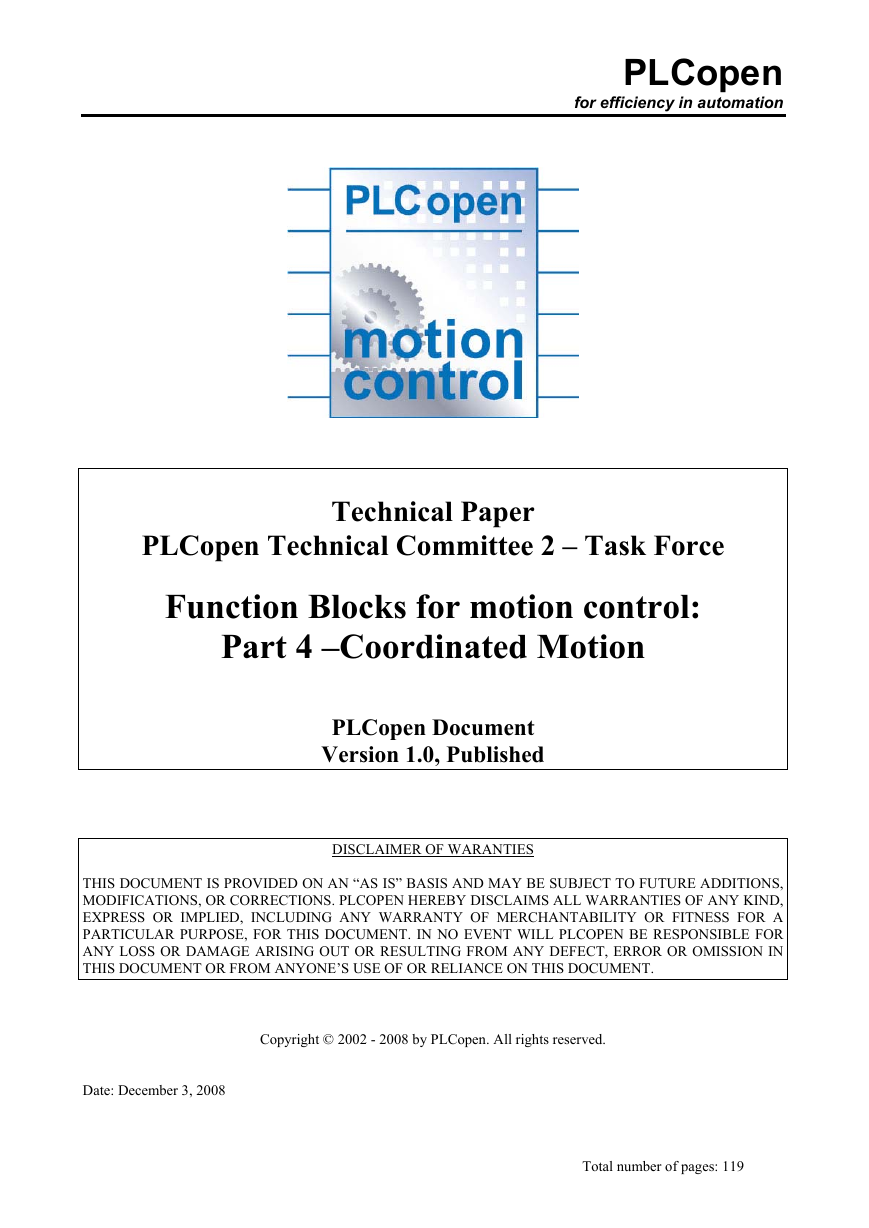

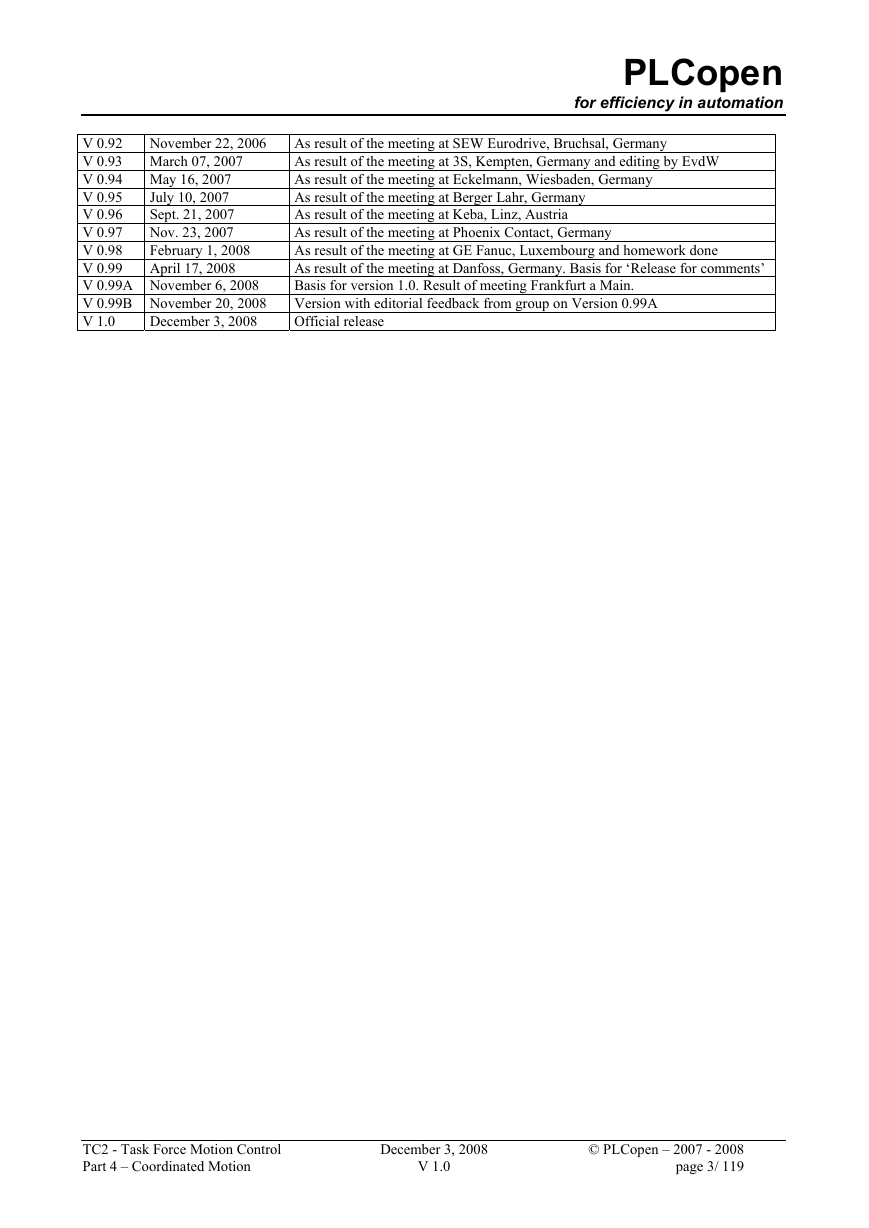
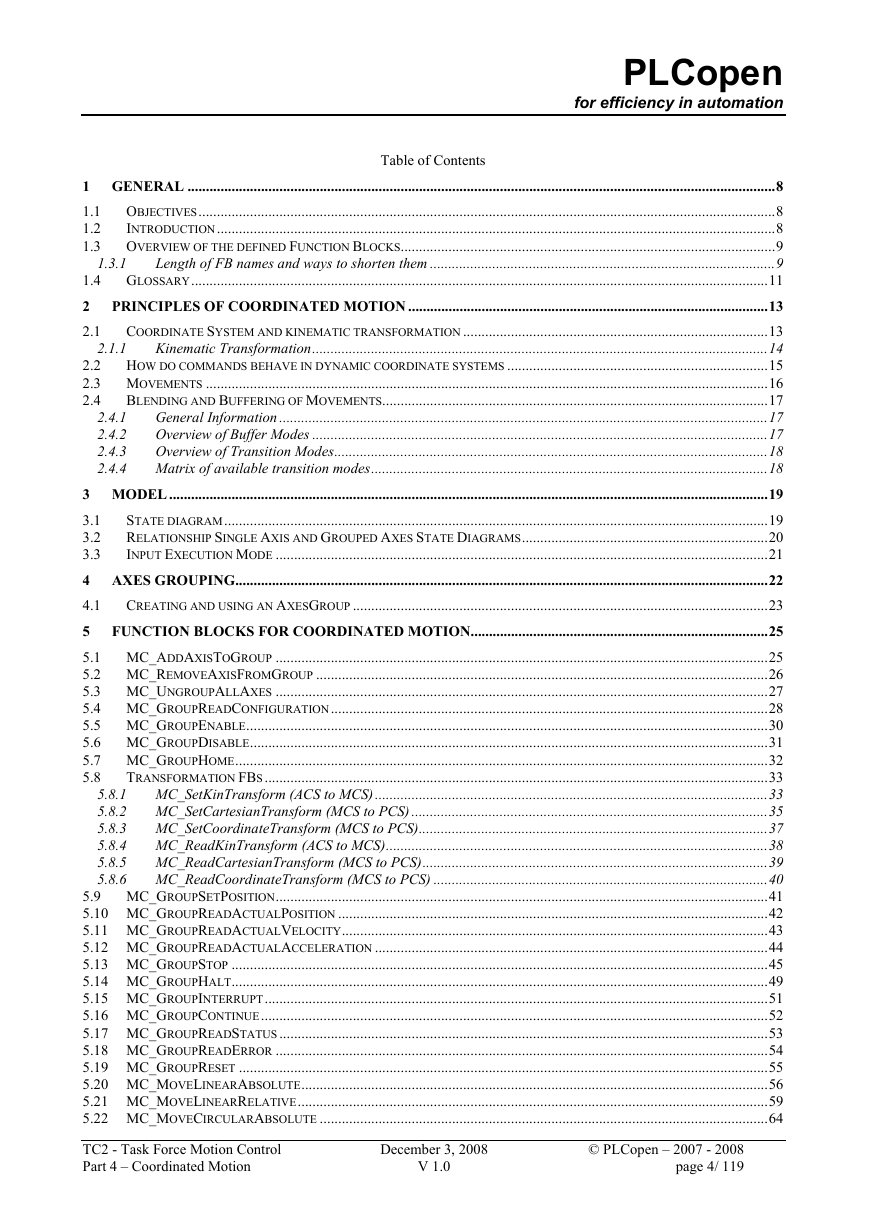
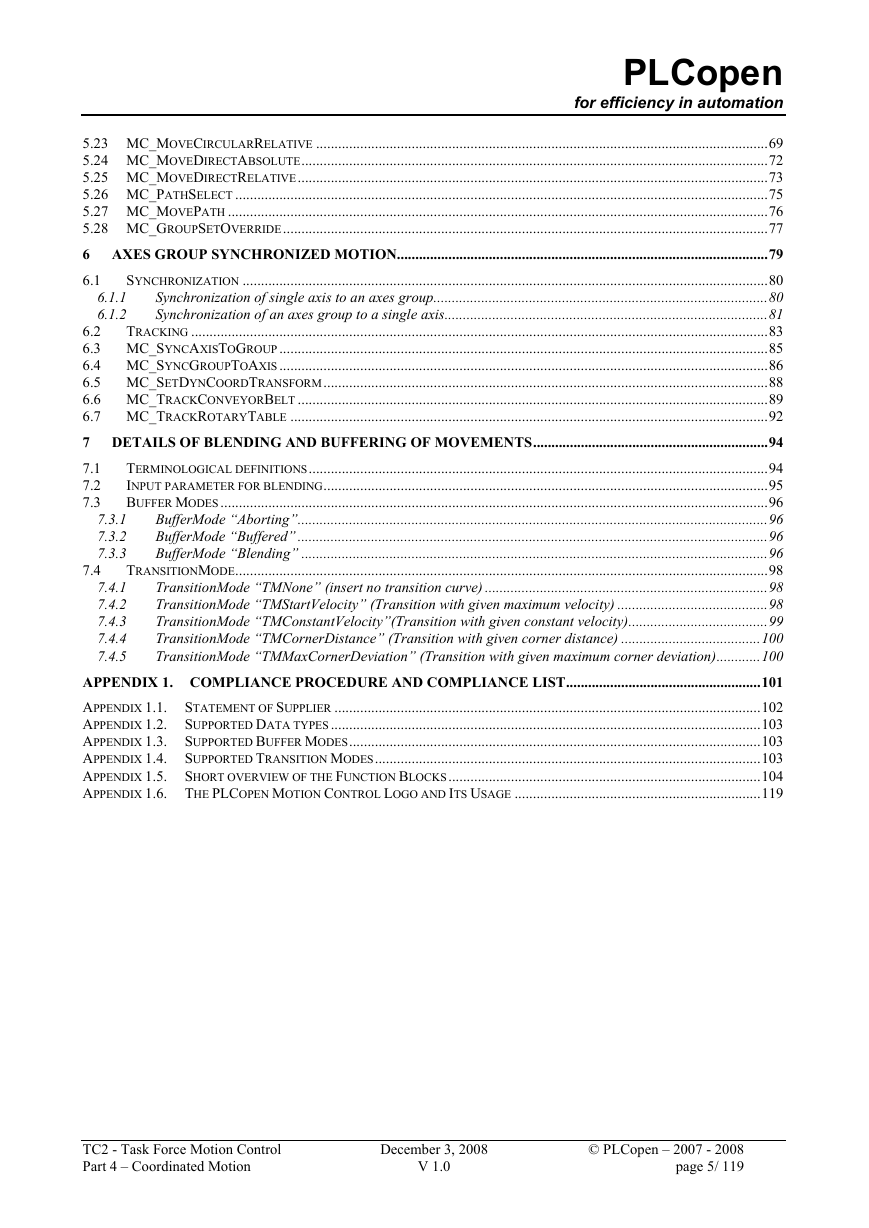
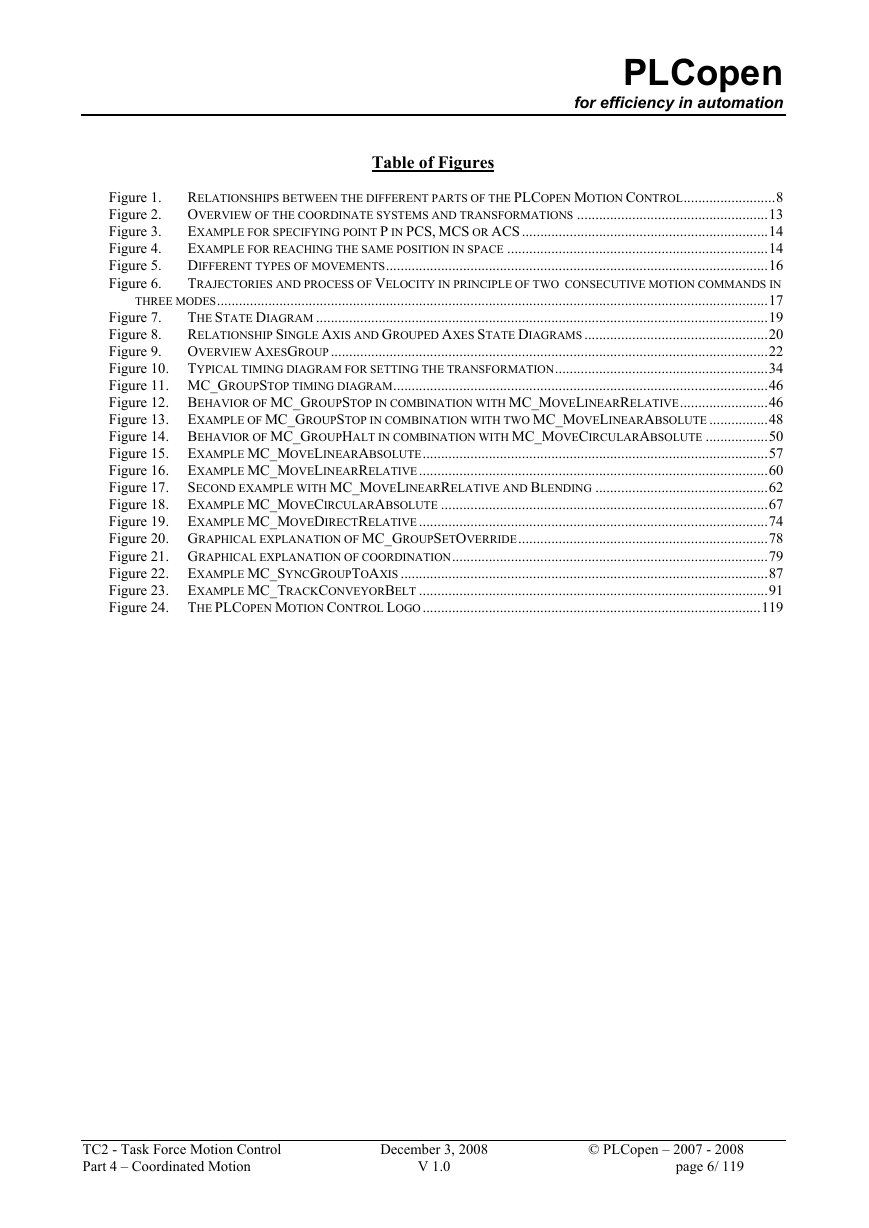
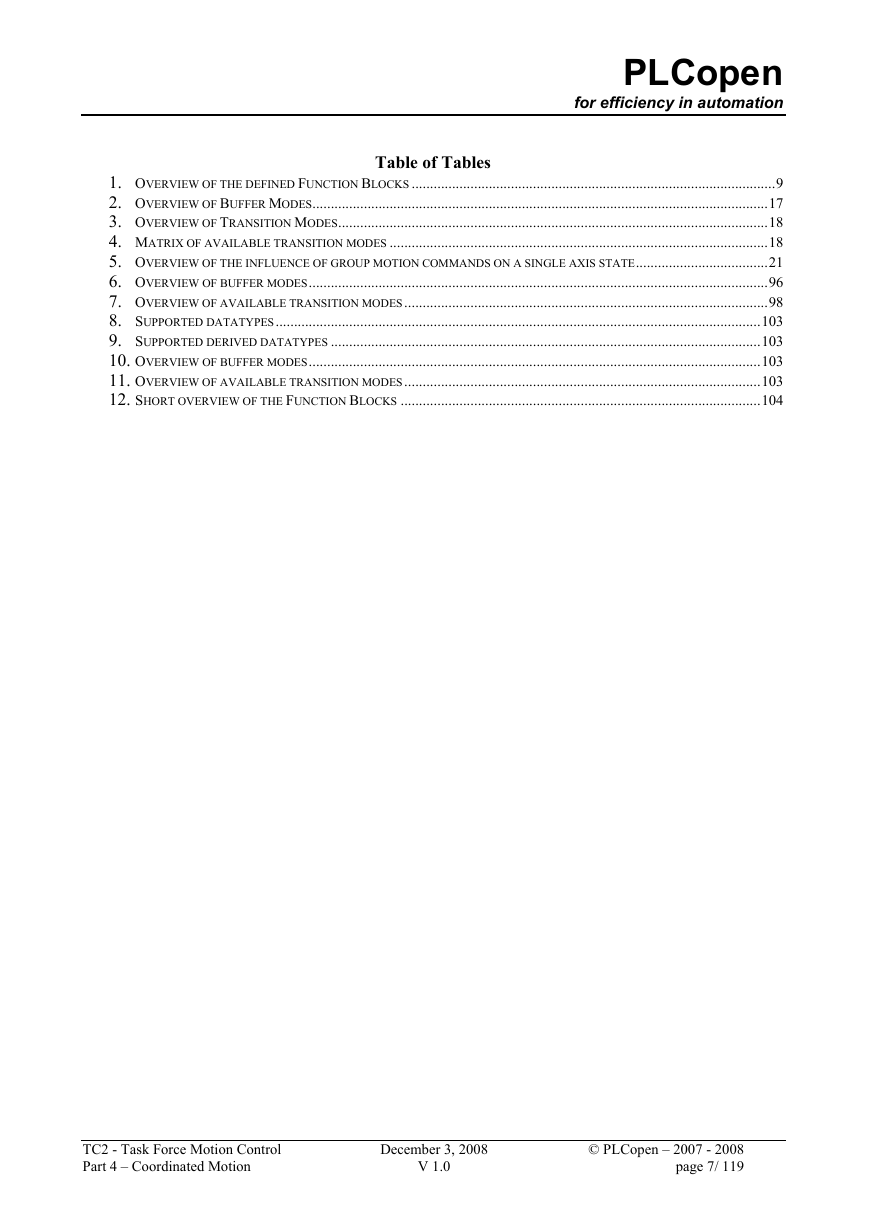









 2023年江西萍乡中考道德与法治真题及答案.doc
2023年江西萍乡中考道德与法治真题及答案.doc 2012年重庆南川中考生物真题及答案.doc
2012年重庆南川中考生物真题及答案.doc 2013年江西师范大学地理学综合及文艺理论基础考研真题.doc
2013年江西师范大学地理学综合及文艺理论基础考研真题.doc 2020年四川甘孜小升初语文真题及答案I卷.doc
2020年四川甘孜小升初语文真题及答案I卷.doc 2020年注册岩土工程师专业基础考试真题及答案.doc
2020年注册岩土工程师专业基础考试真题及答案.doc 2023-2024学年福建省厦门市九年级上学期数学月考试题及答案.doc
2023-2024学年福建省厦门市九年级上学期数学月考试题及答案.doc 2021-2022学年辽宁省沈阳市大东区九年级上学期语文期末试题及答案.doc
2021-2022学年辽宁省沈阳市大东区九年级上学期语文期末试题及答案.doc 2022-2023学年北京东城区初三第一学期物理期末试卷及答案.doc
2022-2023学年北京东城区初三第一学期物理期末试卷及答案.doc 2018上半年江西教师资格初中地理学科知识与教学能力真题及答案.doc
2018上半年江西教师资格初中地理学科知识与教学能力真题及答案.doc 2012年河北国家公务员申论考试真题及答案-省级.doc
2012年河北国家公务员申论考试真题及答案-省级.doc 2020-2021学年江苏省扬州市江都区邵樊片九年级上学期数学第一次质量检测试题及答案.doc
2020-2021学年江苏省扬州市江都区邵樊片九年级上学期数学第一次质量检测试题及答案.doc 2022下半年黑龙江教师资格证中学综合素质真题及答案.doc
2022下半年黑龙江教师资格证中学综合素质真题及答案.doc